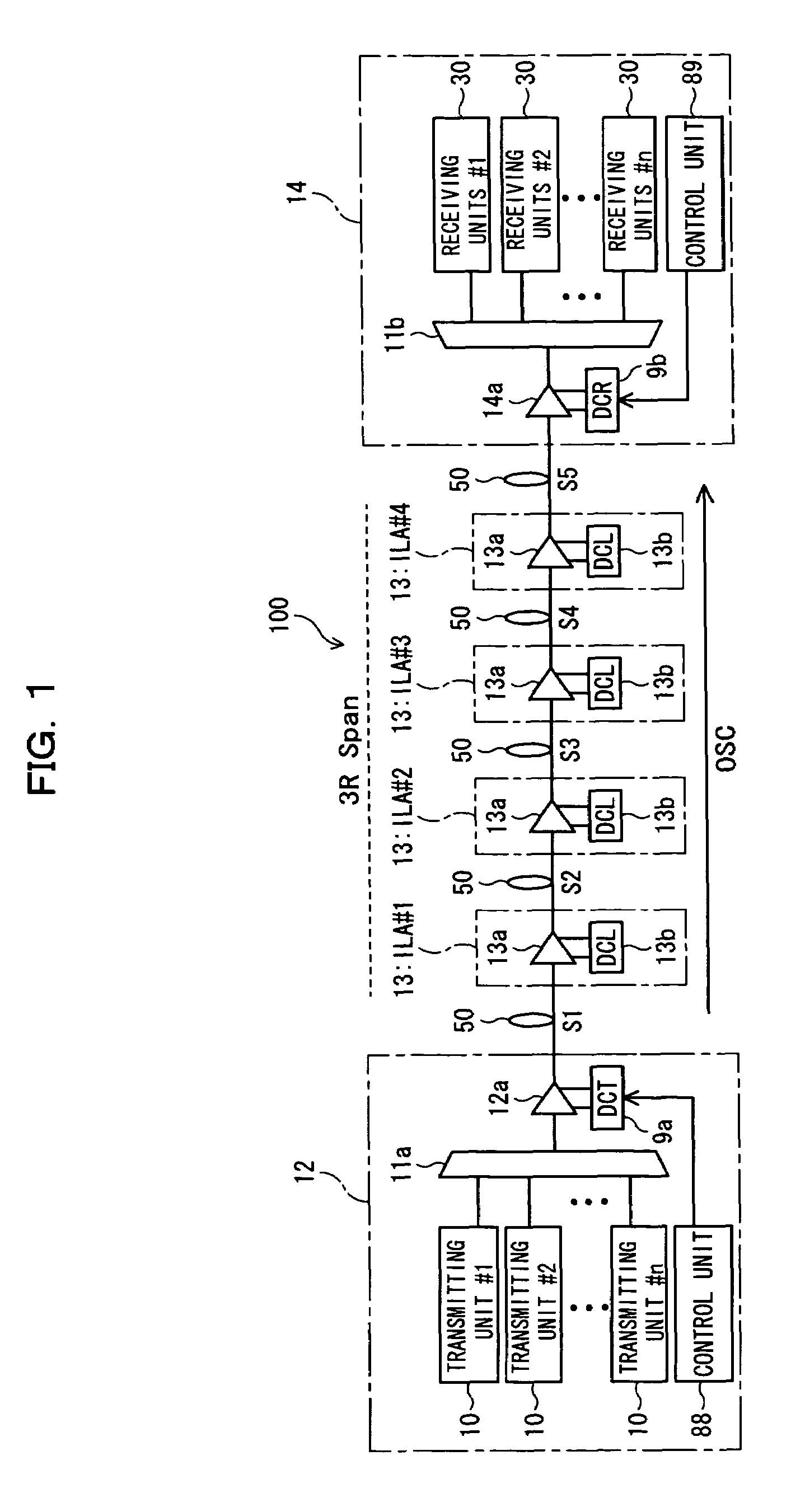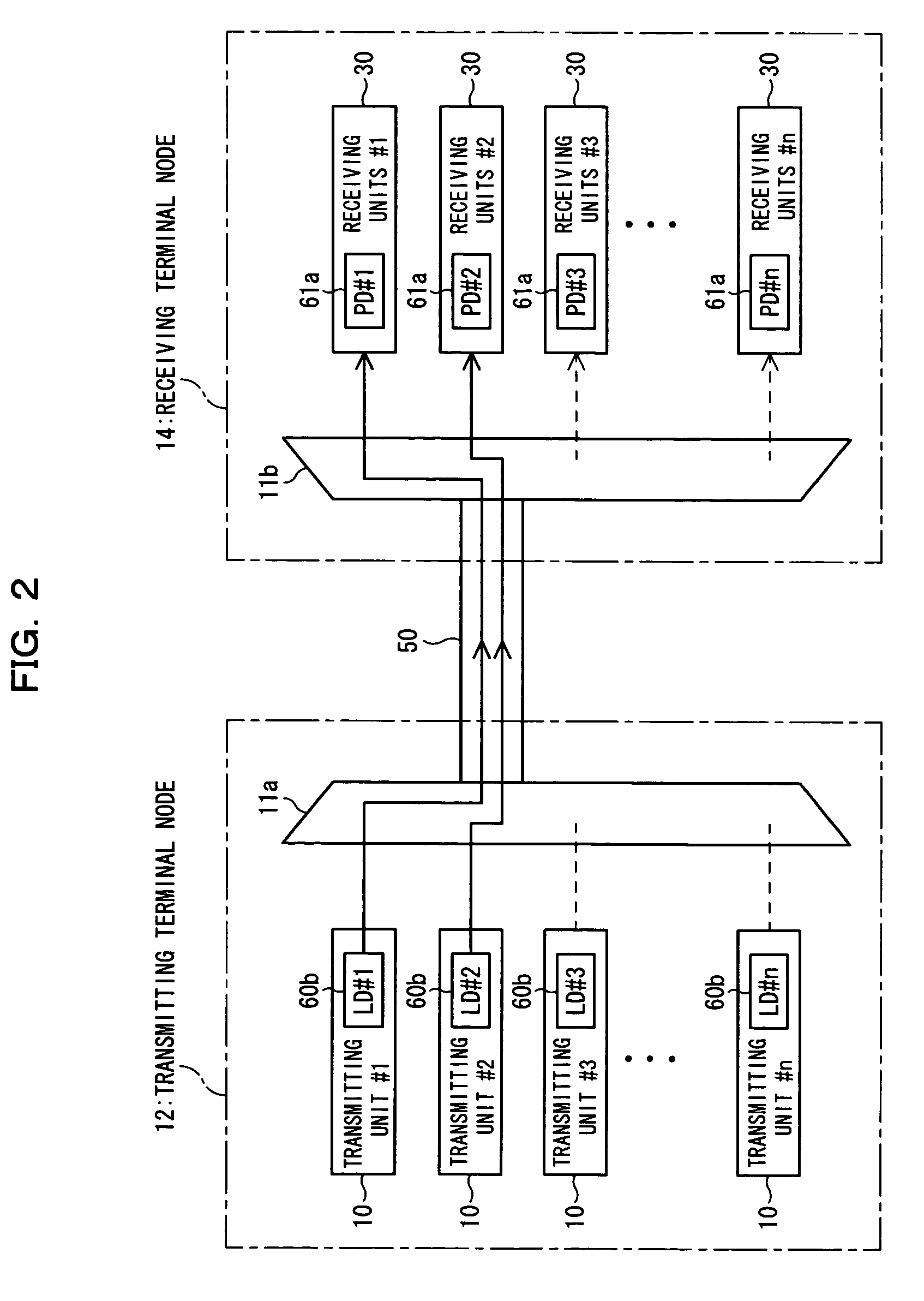Dispersion compensation quantity setting method, receiving terminal station, and wavelength-multiplexing optical transmission system
a technology of optical transmission system and quantity setting method, which is applied in the direction of electromagnetic transmission, multi-communication, wavelength-division multiplex system, etc., can solve the problems of difficulty in long-distance transmission, waveform distortion, and limitation, so as to improve transmission quality and reliability, reduce examination efforts, and promote the effect of reducing parts cos
- Summary
- Abstract
- Description
- Claims
- Application Information
AI Technical Summary
Benefits of technology
Problems solved by technology
Method used
Image
Examples
first embodiment
(A) Description of First Embodiment of the Present Invention
[0065]FIG. 1 is a schematic illustration of a configuration of a WDM transmission system according to a first embodiment of the present invention. The WDM transmission system shown in FIG. 1 is made up of a transmitting terminal node (transmitting terminal station, transmitting node or a transmitting terminal station unit) 12 and a receiving terminal node (receiving terminal station, receiving node or a receiving terminal station unit) 14 for transmitting wavelength-multiplexed light (wavelength-multiplexed signal light) obtained by multiplexing wavelengths different from each other inn channels (n represents a natural number)
[0066](1) WDM Transmission System 100
[0067](1-1) Outline of Configuration of WDM Transmission System
[0068]One example of the WDM transmission system 100 according to the present invention serves as a trunk network system. For example, nodes located in broad areas such as Tokyo, Hawaii and Los Angeles a...
second embodiment
(B) Description of Second Embodiment of the Present Invention
[0288]Each node (transmitting terminal node 12, receiving terminal node 14 and repeating node 13) can transmit wavelength-multiplexed light bidirectionally and can compensate for the dispersion bidirectionally. In the second embodiment, each of the transmitting terminal node 12 and the receiving terminal nod 14 is equipped with a reception dispersion compensator (DCR) and a transmission dispersion compensator (DCT).
[0289]FIG. 20 is a schematic illustration of a configuration of a WDM transmission system according to the second embodiment of the present invention. The WDM transmission system 100b shown inFIG. 20 is designed to transmit wavelength-multiplexed light bidirectionally, and it is made up of a transmitting / receiving terminal node (transmitting / receiving terminal station) 22, a transmitting / receiving terminal node (transmitting / receiving terminal station) 24 and, for example, four repeating nodes 13, and optical fi...
PUM
 Login to View More
Login to View More Abstract
Description
Claims
Application Information
 Login to View More
Login to View More - R&D
- Intellectual Property
- Life Sciences
- Materials
- Tech Scout
- Unparalleled Data Quality
- Higher Quality Content
- 60% Fewer Hallucinations
Browse by: Latest US Patents, China's latest patents, Technical Efficacy Thesaurus, Application Domain, Technology Topic, Popular Technical Reports.
© 2025 PatSnap. All rights reserved.Legal|Privacy policy|Modern Slavery Act Transparency Statement|Sitemap|About US| Contact US: help@patsnap.com



